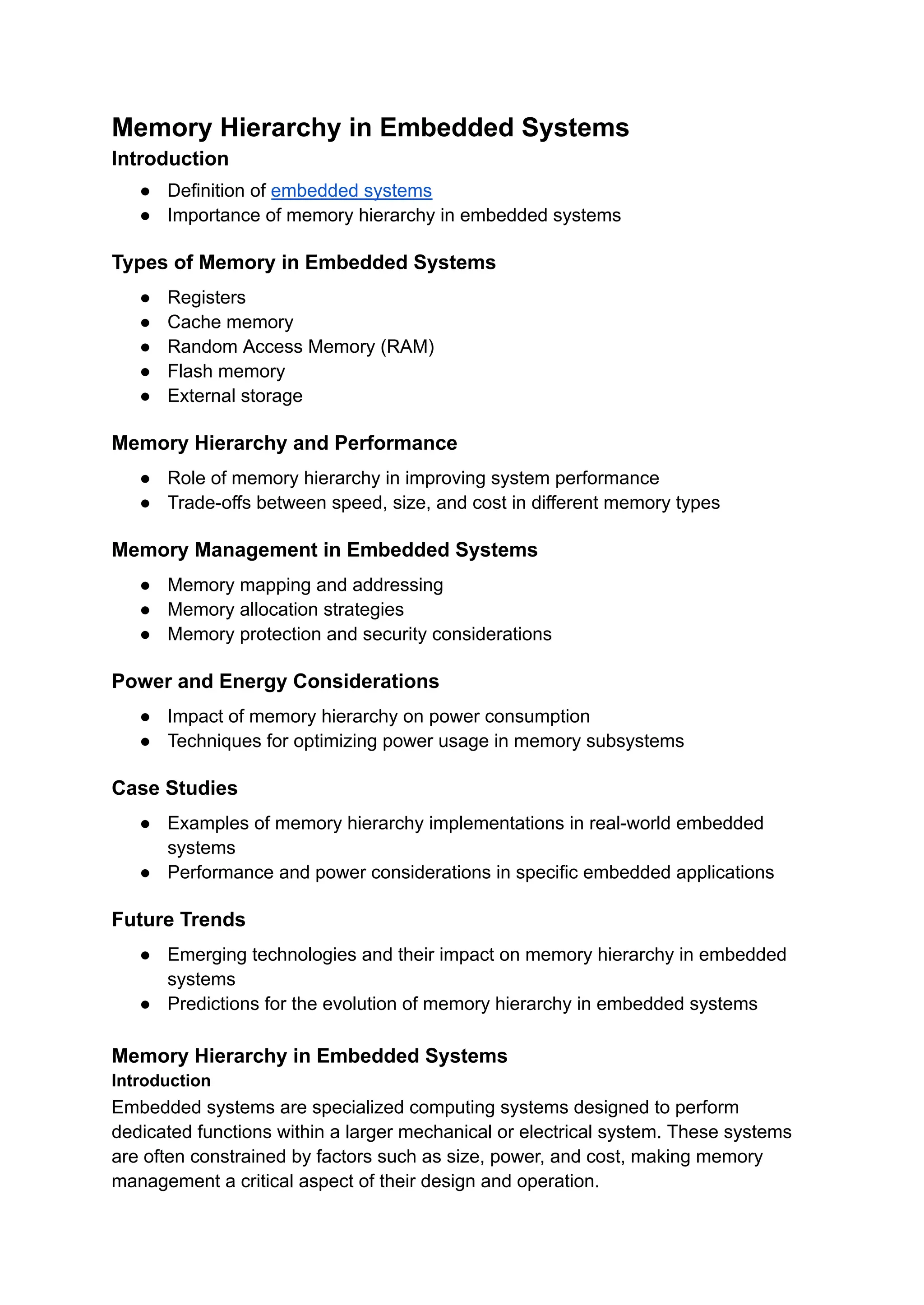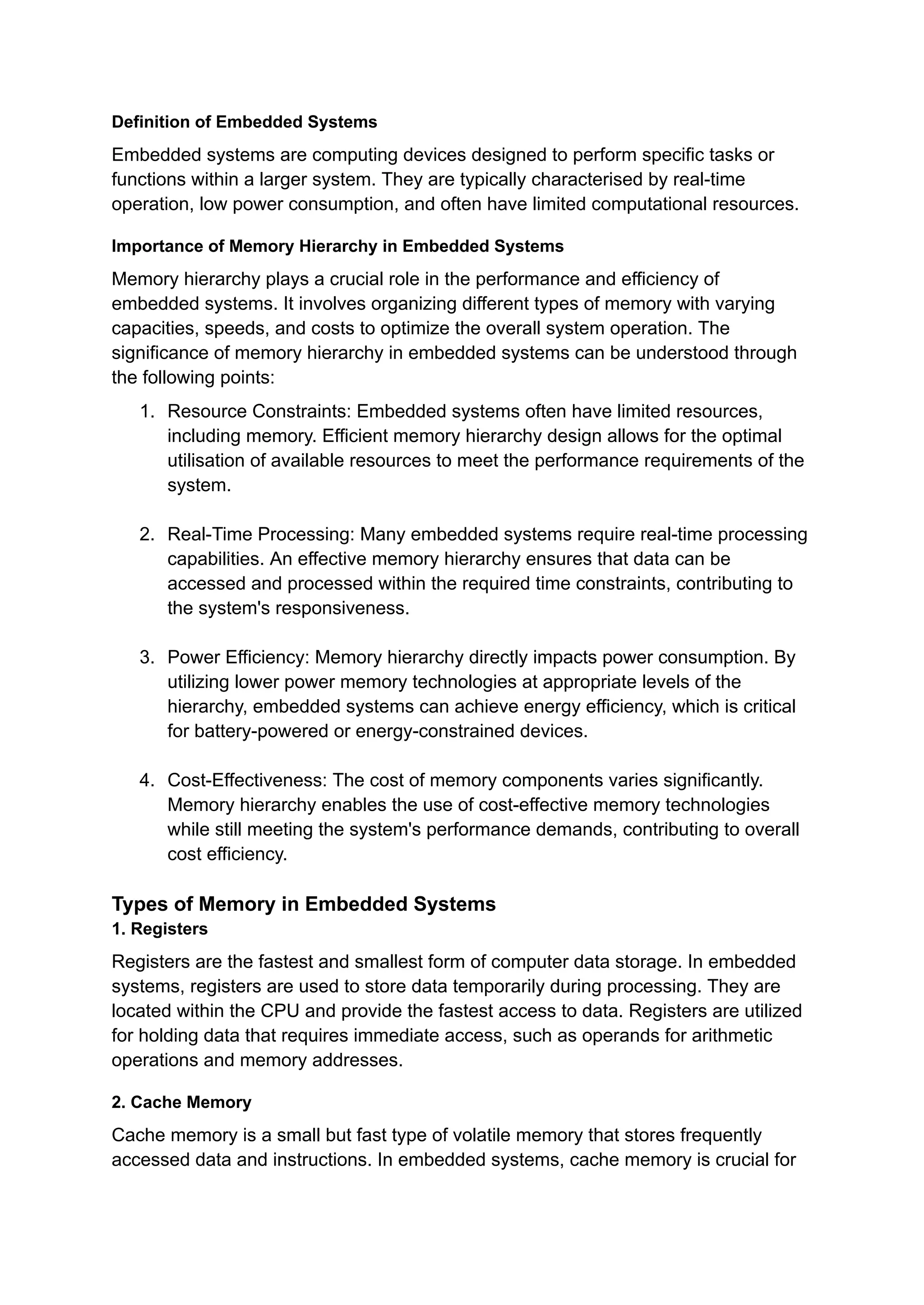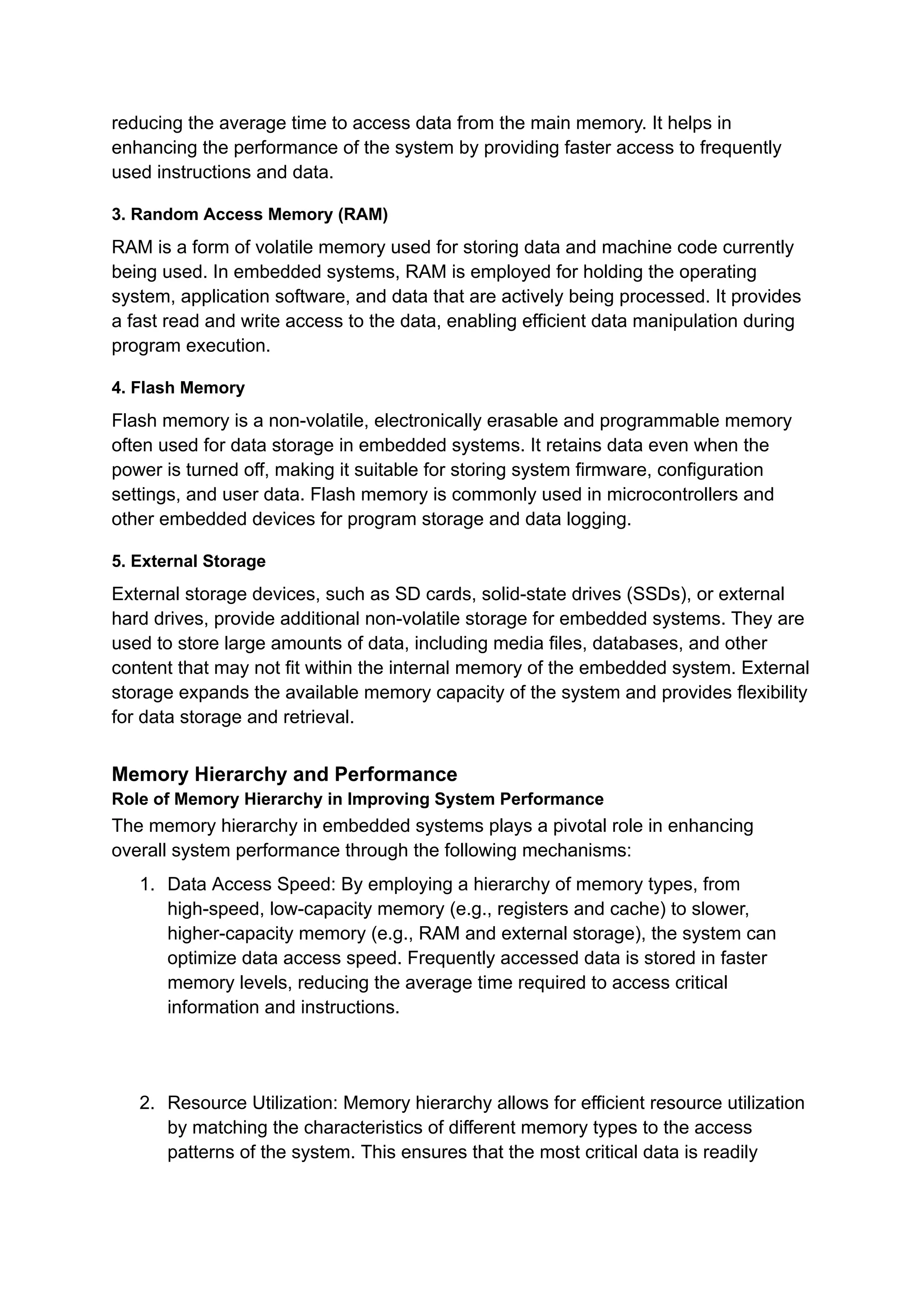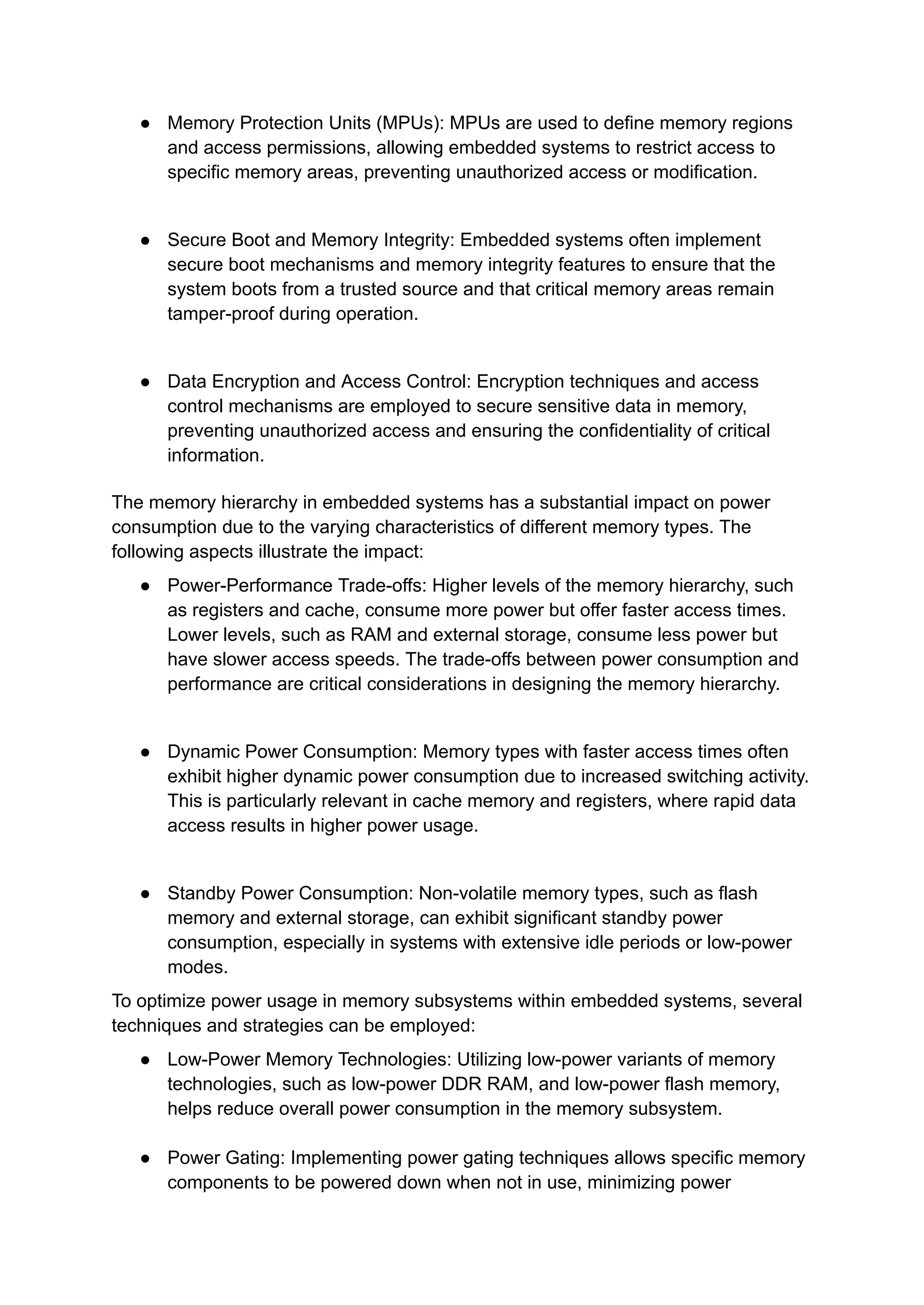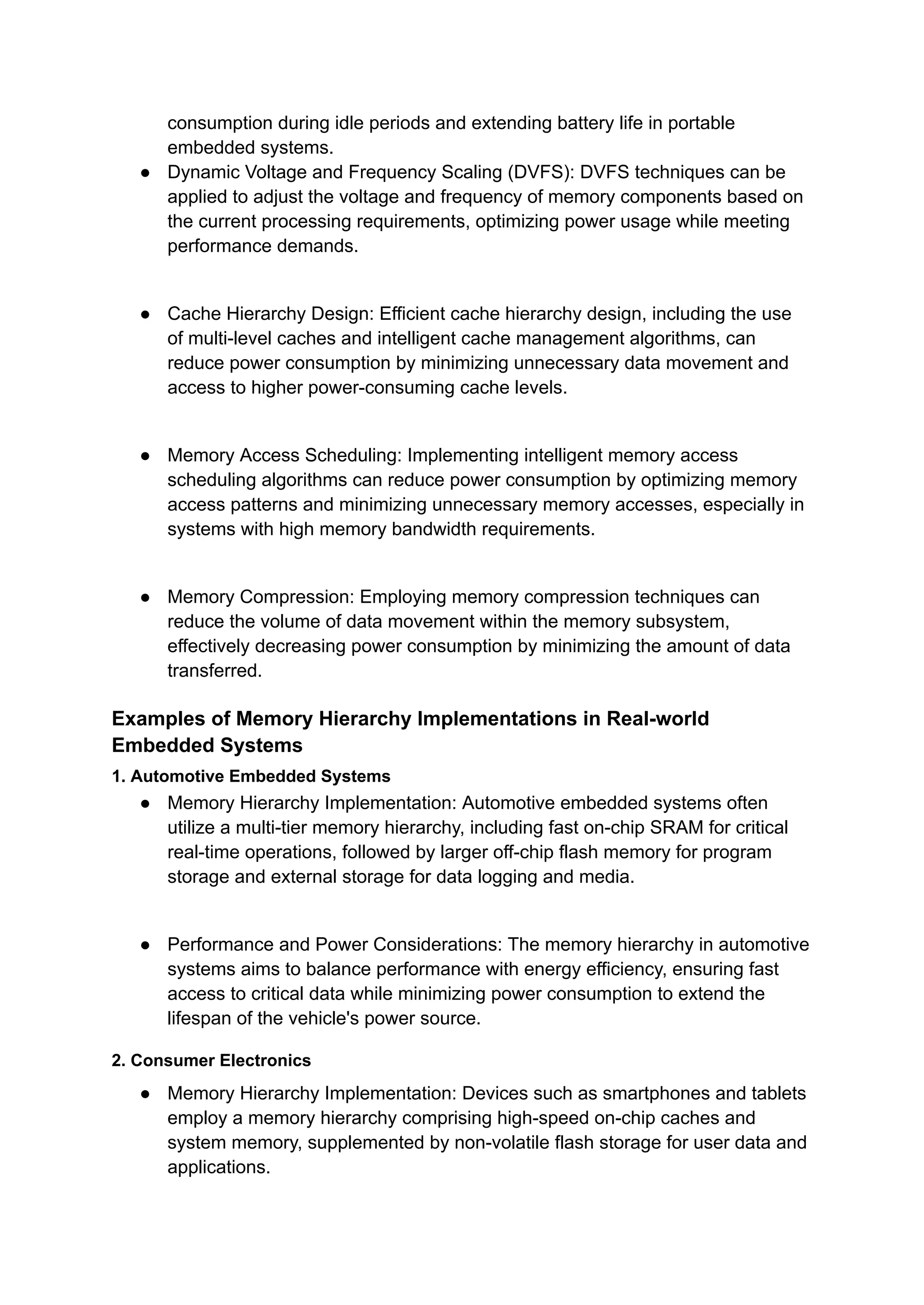The document discusses the significance of memory hierarchy in embedded systems, detailing types of memory, their roles in system performance, and management strategies. It explores power efficiency, trade-offs between speed and cost, and real-world applications, such as in automotive and consumer electronics. Future trends indicate advancements in non-volatile memory technologies and integration with AI accelerators for enhanced performance and efficiency.
